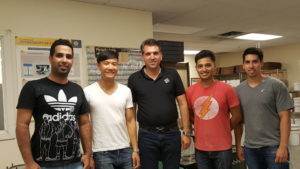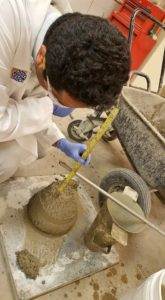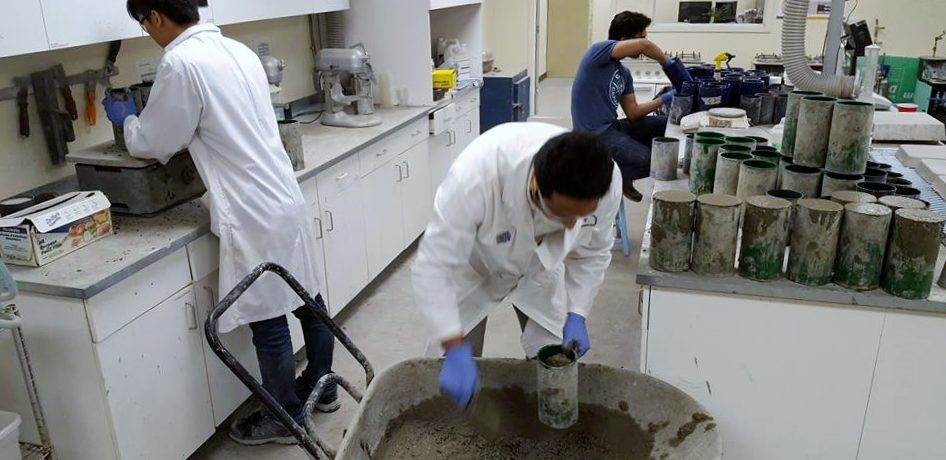Kryton, the pioneer of Crystalline Waterproofing technology, is partnering with researchers and professors at the University of Victoria (UVic) working on making smart concrete that permanently heals and seals cracks, with the goal of reducing potential infrastructure disasters and extending lifespans of buildings. Kryton’s Research and Development team has been closely involved in these projects allowing testing of our products and participating in consultations.

Kryton Research and Development team with UVic student, Mr. Azarza.
Pejman Azarsa, a PhD candidate in Civil Engineering at UVic, recently visited the Kryton’s Research and Development Laboratory and collaborated with the team as he works on his thesis research. Azarsa is also working together with Dr. Rishi Gupta, Civil Engineering Professor at Uvic, who has been researching sustainable and smart concrete for many years. He says there are four phases to his research into smart, durable and waterproof concrete.
For the first phase, Azarsa examined the micro and nano structure of Krystol Internal Membrane (KIM) treated concrete with a scanning transmission electron holography microscope (STEHM) and scanning electron microscope (SEM). This microscope has one of the highest magnification in the world, measuring electrons rather than light. “The electron has a wavelength one million times smaller than light and the spatial resolution of the STEHM will approach its wavelength, i.e., approximately two picometers. The electron also carries a charge and magnetic moment, which can be used by electron holography to interrogate the electronic properties of atoms,” states the UVic Advanced Microscopy Facility STEHM Highlights document. The microscope allowed him to identify and measure the crystal growth in the concrete.
In the second phase, a durability comparison is being done between concrete structures treated with KIM compared with those that are untreated. Azarsa says two years ago, 18 different column samples were put into a variety of environmental conditions including marine environments. Those samples will be taken back into the laboratory this fall and the impact of the environmental wear will be documented.
For the third phase of research, the efficiency of KIM’s self-sealing capacity is being investigated. Azarsa is now working on this research using samples the Kryton team helped prepare. He will be using a patented technique invented jointly by Kryton and Dr. Gupta to measure how fast concrete can heal itself.
The final phase of Azarsa’s research will be considering the shrinkage capability of concrete that has been treated with KIM versus untreated concrete. He will have all the phases of his research investigation completed by the end of 2017.
At Kryton, we are eager to support this kind of research that will help build the body of knowledge that exists around integral crystalline waterproofing and self-sealing smart concrete.

Mr. Azarza performing a slump test.



